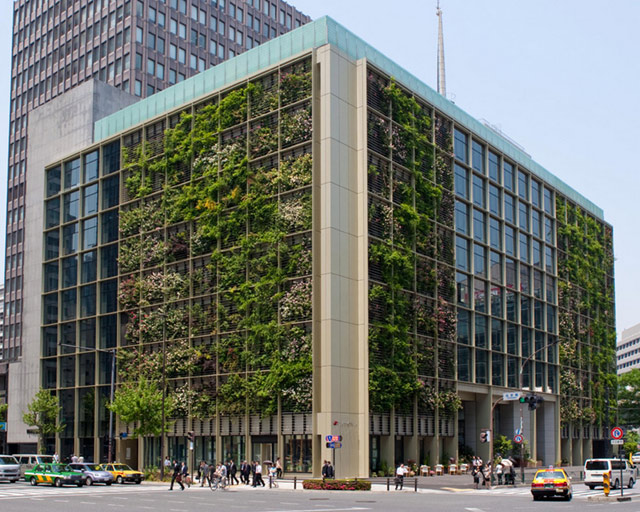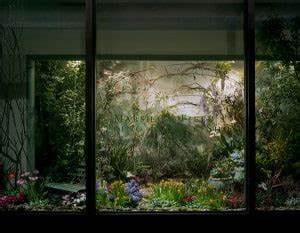
Introduction
The concept of vertical gardens in corporate and office settings has gained significant attention in recent years. These innovative green structures not only add a touch of natural beauty to otherwise sterile environments but also provide numerous benefits for both employees and the overall workplace. Implementing green strategies, such as vertical gardens, has become increasingly important as organizations strive to create sustainable and healthy work environments. This article explores the potential benefits, historical background, key concepts and definitions, main discussion points, case studies, current trends, challenges, and future outlook of vertical gardens in corporate and office spaces.
Historical Background
Vertical gardens have a rich history that dates back centuries. The ancient Hanging Gardens of Babylon are often considered the earliest documented example of vertical gardens. However, it was not until the 20th century that vertical gardens gained popularity in corporate and office settings. Significant milestones in the use of vertical gardens include the pioneering work of French botanist Patrick Blanc and the development of innovative irrigation systems for vertical gardens in the 1990s.
Key Concepts and Definitions
Vertical gardens, also known as living walls or green walls, are structures that allow plants to grow vertically on a wall or other vertical surface. These gardens use special techniques and materials to provide necessary support, irrigation, and nutrients for the plants. Green strategies in corporate and office environments refer to the implementation of sustainable practices, such as vertical gardens, to mitigate the negative impact of traditional office spaces on the environment. Key terms such as biophilia, biophilic design, and green infrastructure play a crucial role in understanding the importance of vertical gardens in creating healthy workspaces.

Benefits of Vertical Gardens in Corporate and Office Settings
Improved air quality and reduced pollution: Vertical gardens act as natural air filters, absorbing pollutants and releasing clean oxygen. This improves indoor air quality and reduces the presence of harmful substances, leading to a healthier and more productive workforce.
Enhanced aesthetics and employee well-being: The presence of greenery in the workplace has been linked to increased job satisfaction, reduced stress levels, and improved mental well-being. Vertical gardens create a visually appealing and calming atmosphere, contributing to a positive work environment.
Increased productivity and job satisfaction: Studies have shown that employees working in environments with natural elements, such as vertical gardens, experience higher levels of productivity, creativity, and overall job satisfaction. These gardens provide a connection to nature, boosting employee morale and motivation.
Practical Considerations for Implementing Vertical Gardens
Types of vertical gardens suitable for different spaces: There are various types of vertical gardens, including modular systems, hydroponic systems, and pocket gardens. Choosing the right type depends on factors such as available space, lighting conditions, and maintenance requirements.
Maintenance requirements and considerations: Vertical gardens require regular maintenance, including watering, pruning, and fertilizing. Employing a professional maintenance team or providing training for staff members can ensure the longevity and health of the garden.
Cost and return on investment analysis: Implementing a vertical garden involves initial costs, including installation and plant selection. However, the long-term benefits, such as improved employee well-being and energy savings, often outweigh the upfront expenses. Conducting a thorough cost and return on investment analysis is crucial for decision-making.
Case Studies or Examples
Many corporations and offices have successfully implemented vertical gardens, reaping the benefits they offer. For example, the PNC Financial Services Group in Pittsburgh installed a 2,380 square foot vertical garden, resulting in reduced energy consumption and improved air quality. Similarly, the Etsy headquarters in Brooklyn features a massive living wall, contributing to employee well-being and environmental sustainability.

Current Trends or Developments
Recent research findings have emphasized the effectiveness of vertical gardens in corporate and office environments. Studies have highlighted the positive impact of vertical gardens on employee health, satisfaction, and productivity. Additionally, innovative technologies and designs, such as automated irrigation systems and modular panels, are being utilized to enhance the efficiency and accessibility of vertical gardens. Furthermore, the growing popularity of vertical gardens has led to their inclusion in sustainable building certifications like LEED and WELL.
Challenges or Controversies
Implementing vertical gardens in corporate and office settings may present challenges such as limited space availability and structural considerations. It is essential to carefully evaluate the feasibility of installing vertical gardens in each specific environment. Furthermore, some individuals and organizations may question the long-term viability and effectiveness of vertical gardens, raising concerns about maintenance costs and potential disruptions to the workspace.

Future Outlook
The future of vertical gardens in corporate and office environments looks promising. Advancements in technology and research are expected to further enhance the effectiveness and accessibility of these green structures. With increased awareness and understanding of the benefits, more organizations are likely to adopt vertical gardens as a sustainable and healthy workplace solution.
References
Blanc, Patrick. The Vertical Garden: From Nature to the City. W. W. Norton & Company, 2012.
Grant, Richard. “Why Plants Make You Feel Better.” BBC Future, 23 Nov. 2020, www.bbc.com/future/article/20201123-why-plants-make-you-feel-better.
Sibilla, Federica. “Vertical Gardens as an Active Living Wall: Improving Indoor Air Quality.” MDPI, 15 Apr. 2020, www.mdpi.com/2073-4441/12/4/1073.




